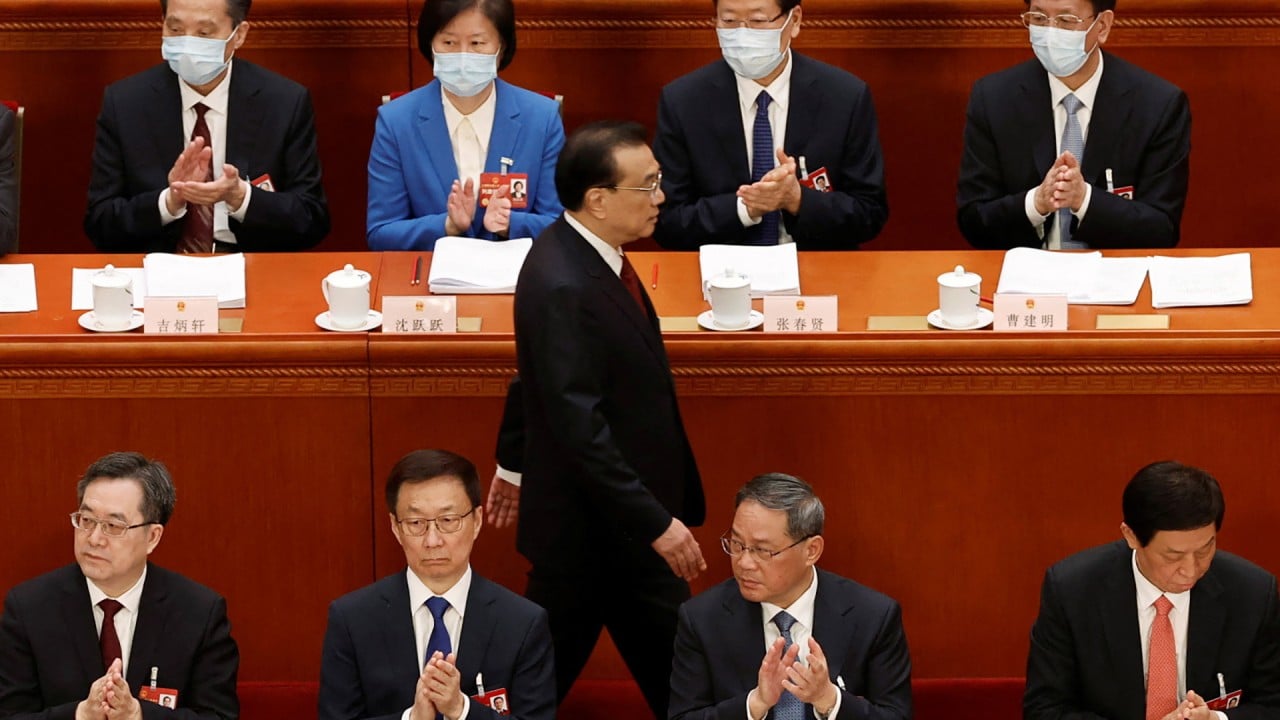
02:52
China's 'two sessions': Premier Li Keqiang emphasises achievements, economy in final work report
China 2023 GDP: why Beijing set a moderate target, and what it signifies for economic growth
- After falling far short of its GDP target last year, Beijing is being a bit more reserved in 2023, and analysts say this reflects the need to cultivate better-quality growth long-term
- ‘Domestic and international challenges’ are forcing a number of reforms, and economic stability remains of paramount importance
In gauging how China’s economy will fare this year, Beijing has set a relatively moderate growth target that will allow for more leeway to focus on resolving long-term challenges facing the world’s second-largest economy, according to analysts.
The world’s second-largest economy aims to boost its gross domestic product (GDP) by around 5 per cent this year, outgoing Premier Li Keqiang told about 3,000 parliamentary deputies at the Great Hall of the People in Beijing on Sunday.
The “around 5 per cent” expectation for 2023 is above the average of 4.5 per cent growth in the past three years. It is also above the 4.8 per cent average growth rate needed to fulfil China’s aspirations of becoming a moderately prosperous nation over the next 13 years.
“[The 2023 GDP goal] is not overly optimistic and does not spend too much on boosting growth. It focuses more on longer-term growth challenges,” said Iris Pang, ING Bank’s chief Greater China economist.
Zhao Xijun, a finance professor at Renmin University, said Beijing is looking to cultivate better-quality growth, with an emphasis on stability.
“Such an expansion pace is reasonable since China lays greater emphasis on improving competitiveness and innovation,” he said. “It was also as a result of existing domestic and international challenges.”
As it happened: Chinese Premier Li Keqiang’s last work report to the NPC
Domestically, Li warned of hidden dangers in the property market, and of the risks facing small- and medium-sized financial institutions.
“The foundation for stable growth needs to be consolidated, insufficient demand remains a pronounced problem, and the expectations of private investors and businesses are unstable,” the premier said.
In its annual planning report delivered to the parliament, the National Development and Reform Commission – chaired by He Lifeng, who is set to be vice-premier in charge of financial work – said the GDP target is consistent with China’s current growth potential and with the resources and production factors it has on hand.
“It will be a positive signal to the market and will enable us to bolster confidence, guide expectations, expand employment, improve living standards, and prevent and defuse risks while pursuing development,” the NDRC report said.
The top economic planner specified a variety of risks faced by the Chinese economy, including competition among major countries, geopolitical conflicts, supply-side constraints and inadequate domestic demand.
“Instability, uncertainty, and unpredictability in the external environment have become common,” the report warned. “Financial risks are on the rise, and fluctuations in global financial markets are intensifying. Cross-border, cross-market and cross-sector risks have become more interrelated.”
The NDRC stressed that debt risks from local governments’ financing platforms need to be addressed immediately, and acknowledged that economic recovery will be hard for some regions.
“The problem of insufficient total demand remains relatively acute,” it said. “There are prominent bottlenecks in some basic raw materials and key equipment, parts and components, and there are still many obstructions and blockages in … supply chains.”
[China’s GDP target] would provide some room for reforms and a reduction in debt levels
As part of their bid to boost effective investment, authorities set the fiscal deficit ratio at 3 per cent of GDP – an increase from last year’s 2.8 per cent but lower than market expectations of above 3 per cent.
“Fiscal sustainability and debt risks are back on the block,” said Bert Hofman, director of the National University of Singapore’s East Asian Institute.
He added that the “not too ambitious” GDP target came as the government report focused more on reforms than it did last year.
“It would provide some room for reforms and a reduction in debt levels – both are urgently needed to ensure longer-term growth rates of about 5 per cent,” Hofman said.
‘The next China is China’ for foreign investors, claims consulting firm CEO
The government’s targets partly reflected the premier’s long-standing views, including refraining from big economic stimulus measures, and the reformist approach to tackling China’s problems on the ground.
Instead, he recommended “preventing a build-up of new debt”, supporting the private sector and intensifying efforts to court foreign investment, particularly landmark foreign-funded projects.
“There is no fiscal stimulus from the NPC, which is not surprising as the economic recovery is already on track,” said Zhiwei Zhang, chief economist at Pinpoint Asset Management. “A key issue to watch in the next few months is how the new leaders will boost private-sector confidence.”
Additional reporting by Mia Nulimaimaiti


